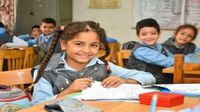On October 19, 2025, students, parents, and educators across the country found themselves glued to screens and checking their phones as the Ministry of Education and the Ministry of Higher Education and Scientific Research rolled out the results of the general secondary education certificate exams. This annual event, always a source of anticipation and, let’s be honest, a few frayed nerves, took on an added layer of significance this year due to the meticulous security measures and transparency promised by the authorities.
According to official statements released by the Ministry of Higher Education and Scientific Research, the results were made public through a mix of official websites and social media platforms. The ministry wanted to ensure that everyone—students, teachers, and parents—had access to the results at the same time. This coordinated approach aimed to maintain credibility and fairness throughout the process, as reported by Amr Bayoumi for the main news outlet covering the announcement.
But the story of these exams wasn’t just about numbers and pass rates. The ministry explained that the exams themselves spanned a wide range of academic and applied disciplines, including scientific, literary, and technical tracks. This diversity, according to the ministry, is designed to reflect the breadth of the modern education system and to give students from all backgrounds a fair shot at demonstrating their knowledge and skills.
Security and integrity were front and center. The ministry underscored that the exams were carried out under strict supervision, with robust security protocols in place to prevent any form of cheating or irregularity. In fact, the ministry didn’t mince words about the seriousness of its approach, stating, "The exams were conducted with strict supervision and security measures to ensure the integrity of the exams." It’s a message that resonates with students who have sometimes felt that the stakes are high and the margin for error is slim.
Transparency was another pillar of the process. The ministry took pains to publish the results in a manner that was open and clear, aiming to bolster trust in the examination system. As the ministry put it, "The results were published in a transparent manner to maintain the credibility of the examination process." For many families, this assurance went a long way in easing concerns about fairness and accuracy.
Digging deeper, the ministry revealed that the exams were carefully crafted to evaluate not just rote memorization, but also understanding and application skills. The questions were designed to test students’ grasp of core concepts and their ability to apply what they’ve learned in real-world scenarios. This approach, according to ministry officials, is key to preparing students for the demands of higher education and the workforce.
And the importance of these exams? The ministry left no doubt. "The exams are crucial for the academic and professional future of students," the statement read. For students staring down the next chapter—whether that’s university, vocational training, or jumping straight into the job market—these results are more than just numbers; they’re passports to new opportunities.
To further support the integrity of the process, the ministry took additional steps to prevent cheating or fraud. These included not just physical security at exam sites, but also digital safeguards and monitoring. As a result, students and their families could feel confident that the results reflected genuine achievement.
In a nod to the digital age, the ministry ensured that results would be accessible online and through official channels. This meant that students could review their performance quickly and easily, without having to wait for paper notifications or stand in long queues at school offices. It’s a small but meaningful step toward modernization—and one that was widely appreciated.
Meanwhile, the Ministry of Education provided detailed statistics and performance metrics, breaking down results by region and educational district. This level of detail allowed educators and policymakers to identify trends, strengths, and areas for improvement across the country’s diverse educational landscape. In total, the announcement included results from 14 different regions, painting a comprehensive picture of student achievement nationwide.
But the context of this year’s exam results was shaped by more than just academic rigor. On the very same day, the National Center for Meteorology issued urgent weather warnings for several regions, including Jazan and multiple surrounding districts. With thunderstorms, heavy rain, and even hail reported, the Ministry of Education faced tough decisions about student safety.
According to the official alert, "The warning includes several Saudi provinces and cities experiencing rainfall exceeding 25 mm, causing traffic disruptions and water accumulation in streets, as well as random flooding." The safety of students was paramount, prompting the ministry to consider suspending in-person classes if weather conditions did not improve by the following morning.
In response, the Ministry of Education outlined a series of contingency measures: lifting attendance requirements for the duration of the alert, transitioning all classes to the Madrasati digital platform and the IEN channel, canceling morning assemblies, and closing school doors entirely—including to teaching staff. Student transport services were also suspended until further notice. These actions, the ministry emphasized, were all about keeping students and staff safe during hazardous weather.
It’s a reminder that education doesn’t exist in a vacuum. External factors—from weather events to public health crises—can have a profound impact on how learning is delivered and experienced. The ministry’s swift response, informed by real-time data from the meteorological center, showcased a commitment to adaptability and student welfare.
Stepping back, the broader educational landscape is undergoing significant change. The Ministry of Higher Education and Scientific Research has been pushing to integrate practical training quality into the national performance evaluation framework for higher education institutions. This means that universities are now being assessed not just on academic outcomes, but also on how well they prepare students for the realities of the workplace.
As Assistant Undersecretary Taif Mohammed Al-Amiri explained, the ministry is working to "enhance the quality of practical training and link it to the realities and requirements of the labor market." This involves standardizing operational models, supervision, and evaluation mechanisms across institutions to ensure consistency and partnership between academia and training providers.
Al-Amiri also highlighted the introduction of a practical training guide, which sets out clear, actionable standards for supervision, follow-up, and evaluation. The ministry has established a comprehensive monitoring system—including regular and surprise visits, review of official records, and quality audits—to ensure compliance. Non-compliant institutions face strict corrective actions, up to and including license revocation if necessary.
For students, these reforms mean more meaningful hands-on experiences, closer alignment between their studies and future careers, and a smoother transition into the workforce. For employers, it means access to a pool of well-prepared, job-ready graduates. As the ministry put it, "The quality of the educational experience gives students a deeper understanding of the real work environment, linking theoretical knowledge with practical experience."
In a year marked by both academic achievement and unexpected challenges, the country’s education system demonstrated resilience, transparency, and a willingness to adapt. Students and families can take pride in their accomplishments, knowing that both their efforts and their safety remain at the heart of national policy.





